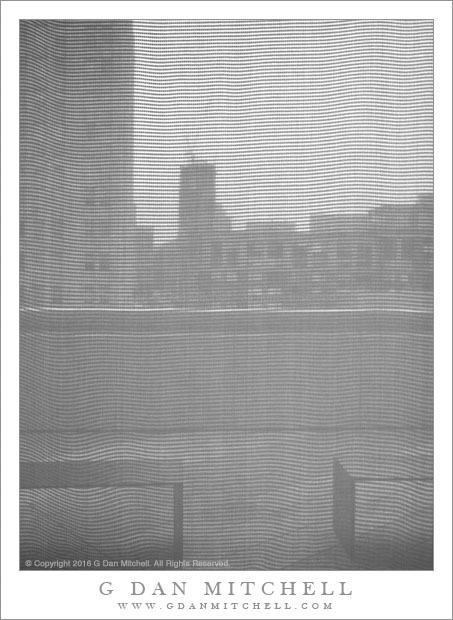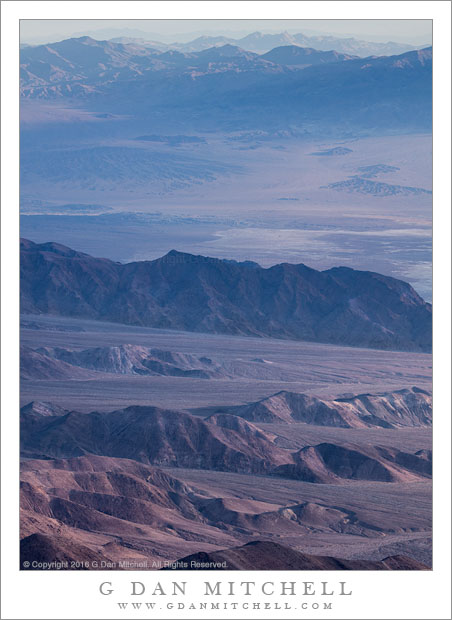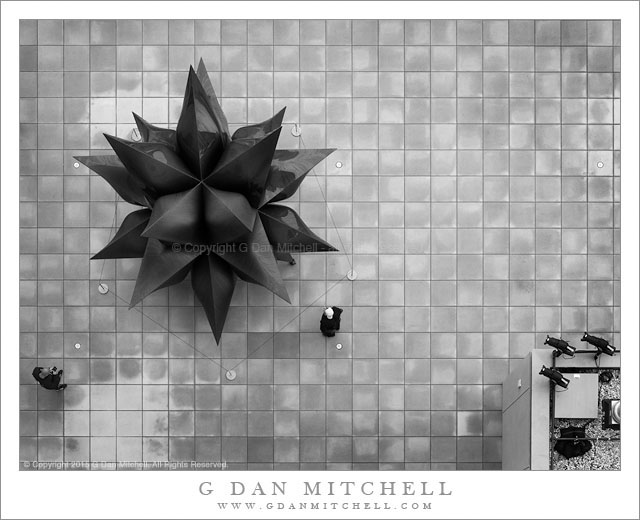
Through the Scrim. San Francisco, California. May 6, 2016. © Copyright 2016 G Dan Mitchell – all rights reserved.
Benches and a balcony, San Francisco Museum of Modern Art
There is a small thread in my photograph of the interior spaces of buildings that looks through gauzy, diffused curtains, blinds, and scrims toward the world outside. For example, I have several in his line that I made at the Getty Museum in Southern California, and some things photographed in museums in New York that go in a similar direction. I made this photograph at the new SFMOMA museum in San Francisco during a members’ preview before the official opening last week.
I love the newly expanded and remodeled museum. One writer commented on the way that the new facility opens to the City. (The former building, as good as it was, was mostly closed off from San Francisco, with few places where the interior space opened to views of the surrounding area.) Now the new “back side” of the museum opens straight out over and into the urban environment, and there is quite a bit to see there — and the design creates a stronger link to this city. In this photograph, which was initially “about” the lines of the buildings in the upper part of the frame, the shapes and tones of the two foreground benches are beginning to interest me more.
 G Dan Mitchell is a California photographer and visual opportunist. His book, “California’s Fall Color: A Photographer’s Guide to Autumn in the Sierra” is available from Heyday Books and Amazon.
G Dan Mitchell is a California photographer and visual opportunist. His book, “California’s Fall Color: A Photographer’s Guide to Autumn in the Sierra” is available from Heyday Books and Amazon.
Blog | About | Flickr | Twitter | Facebook | Google+ | LinkedIn | Email
All media © Copyright G Dan Mitchell and others as indicated. Any use requires advance permission from G Dan Mitchell.



